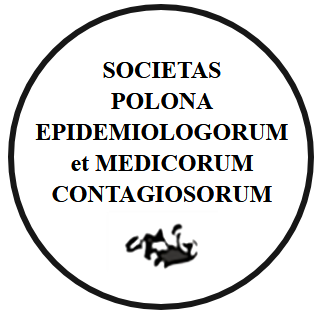ABSTRACT
BACKGROUND. The predisposition of cigarette smokers for the development of respiratory infections, including influenza, have been well documented. As well, those exposed to side stream smoke are prone to viral and bacterial infections of the respiratory tract.
AIM. The study aimed to evaluate whether the prevalence of smoking parents is higher among children with respiratory tract infections, including influenza, in comparison to the general population.
MATERIAL AND METHODS. Observational, cohort study. The authors surveyed a cohort of patients and their families, hospitalized in the Paediatric University Hospital in Warsaw during 2018 influenza season.
Patients were diagnosed with influenza (using PCR) or other respiratory tract infections. A questionnaire on smoking habits was performed.
RESULTS. Overall, 72 patients were included in the study, median age 2 years and 9 months (IQR: 1.4 – 7.2), influenza was diagnosed in 43% (n= 31) of patients. The percentage of regularly smoking parents in the whole cohort amounted to 33.3% (44 of 132) and was statistically significantly higher (p < 0.05) than in the general population (22.7%), whereas in the subgroup with influenza and non-influenza infections it reached 32.2% and 34.2%, respectively.
CONCLUSIONS. The prevalence of smoking parents of children with acute respiratory tract infections is higher than in the general population: exposing children to tobacco smoke is one of the risk factors for acquiring influenza and others respiratory tract infections. Quitting smoking can decrease the risk of infectious diseases.
STRESZCZENIE
WSTĘP. Predyspozycje palaczy papierosów do rozwoju infekcji dróg oddechowych, w tym grypy, zostały dobrze udokumentowane. Podobnie, osoby narażone na bierne palenie częściej nabywają zarówno wirusowe jak i bakteryjne schorzenia dróg oddechowych.
CEL PRACY. Badanie miało na celu ocenę, czy palenie wśród rodziców dzieci z infekcjami dróg oddechowych, w tym z grypą, jest częstsze w porównaniu z populacją ogólną.
MATERIAŁ I METODY. Badanie obserwacyjne, kohortowe. Autorzy przeprowadzili ankietę wśród rodziców pacjentów hospitalizowanych w Szpitalu Pediatrycznym Uniwersytetu Medycznego w Warszawie w trakcie sezonu grypowego w 2018 roku. U pacjentów zdiagnozowano grypę (za pomocą metody PCR) lub inne infekcje dróg oddechowych. Przeprowadzono kwestionariusz dotyczący nawyków palenia.
WYNIKI. Do badania zakwalifikowano 72 pacjentów, z medianą wieku 2 lata i 9 miesięcy (IQR: 1,4 - 7,2), grypę rozpoznano u 43% (n = 31) pacjentów. Odsetek rodziców regularnie palących w całej kohorcie wyniósł 33,3% (44 z 132) i był statystycznie istotnie wyższy (p <0,05) niż w populacji ogólnej (22,7%), podczas gdy w podgrupach z zakażeniami grypą i innymi infekcjami dróg oddechowych wynosił odpowiednio 32,2% i 34,2%.
WNIOSKI. Odsetek palących rodziców dzieci z ostrymi zakażeniami dróg oddechowych jest wyższy niż odsetek palących osób w populacji ogólnej: narażenie dzieci na dym tytoniowy jest jednym z czynników ryzyka zachorowania na grypę i inne infekcje dróg oddechowych. Ograniczenie ekspozycji na dym tytoniowy może zmniejszyć ryzyko nabycia chorób zakaźnych.
You can change cookies settings in your browser. Restricted use of cookies in the browser configuration may affect some functionalities of the website.





